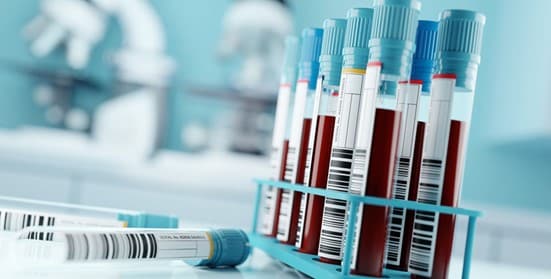How Royale transports biological materials safely to its destination?

Transporting biological material is extremely complex as it is subjected to strict national, regional & global regulations. All procedures and handlers involved in the transportation process will have to follow the applicable GDP & IATA regulations before shipping these materials. In addition, proper packaging is crucial to ensure safe transport and product integrity. The following outlines how biological material can be safely shipped to its destination.
What is considered biological material?
Biological material, also known as biological specimens or samples, are an essential tool for research, allowing tests and assays to be carried out on a population of healthy donors or donors with specific pathologies. This creates a better understanding on pathology in order to find better diagnoses and treatments for patients. Below are a few examples of biological material:
- Synthetic / recombinant nucleic acids
- Organisms and suspensions / lyophilized micro-organisms
- Blood samples and other biological fluids
- Diagnostic specimens
- Fresh/ preserved cells and tissues
- Viruses and subviral particles
- Urine
- Saliva

How to classify biological material?
Classifying biological material is the first step in complying with the Good Distribution Practices (GDP) regulations. Before shipping biological material, it is extremely important to classify the product as there are different shipping requirements and packaging criteria involved for different goods.
- Infectious substances
Infectious substances are known or are reasonably expected to contain pathogens. Pathogens are defined as micro-organisms such as bacteria, viruses, rickettsia, parasites, fungi and prions, which can cause disease in humans or animals. Infectious substances are separated into the following categories:
Category A – Infectious substances which are transported in a form that, if exposure occurs, are capable of causing permanent disability, life-threatening or fatal disease to humans or animals.
Infectious substances meeting these criteria which lead to disease in humans or both in humans and animals must be assigned to UN2814. Those which cause disease in only animals must be assigned to UN2900.
Category B – Infectious substances which contain pathogens and capable of causing infection, but not as severe as Category A. Infectious substances in Category B must be assigned to UN3373.
2. Exempt human / animal specimens
Exempt human / animal specimens are those collected directly from humans or animals, and not known or expected to contain pathogens. Professional judgement should be processed to determine if a substance is exempt. Examples of exempt human / animal specimens include blood or urine tests for cholesterol levels, blood glucose levels & hormone levels; pregnancy tests; health tests required to monitor organ function such as heart, liver & kidney.
3. Unregulated biological materials
Unregulated biological materials are not directly taken from humans or animals, and do not contain infectious substances. Examples of unregulated biological material include non- pathogenic micro-organisms, and environmental samples such as soil, water and food.
What are the packaging requirements for transporting biological material?
Shippers have to place the biological material in a tightly closed and secured leak-proof primary container with laboratory tape. Subsequently, they have to label the container clearly, so that all handlers can easily identify the material.
Afterwards, Royale will assist your shipment with the following procedures:
- Wrapping the primary container with enough absorbents such as pads and mat rolls to absorb leakage.
- Placing the primary container in a sealable, leak-proof secondary container such as PathoPouch and label it with a biohazard symbol.
- Placing the secondary container in a plastic specimen bag with a zip closure.
- Using an inflexible & unbreakable outer packaging that is leak-proof and will withstand rough handling.
- Each outer package will be labelled with the UN number, shipping name, net weight, and the shipper’s & receiver’s information. Have a look at which labels we apply for the outer packaging.
*Depending on the shipment requests, Royale offers various packaging solutions, with a wide range of cube sizes, materials, time span & temperature ranges. Click here to find out more!
Compare the differences between Active, Passive and Hybrid temperature-controlled packaging here!
What if the Biological Material Must Be Kept Cold or Frozen?
Dry ice shipments can be one of the temperature-controlled logistics solutions. Regardless of the hazard classification of biological material, dry ice (or solid Carbon Dioxide) is regulated as dangerous goods. From processing the shipping documents to labelling & delivering your material, it is essential to seek an experienced Life Sciences logistics provider to assist with your shipment. If your product is packaged improperly, this builds a dangerously high pressure inside the sealed container and can eventually damage the product.
Learn how Royale supports dry ice shipments now!
For any temperature-controlled shipment enquiries, please don’t hesitate to talk to our Life Sciences experts!


